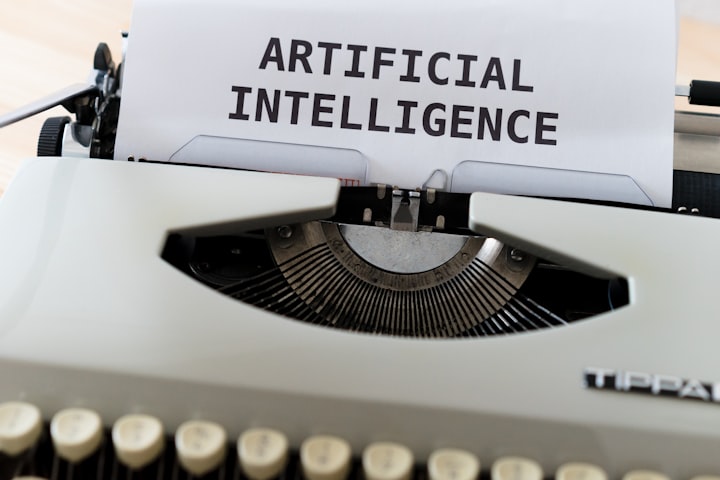Everything You Needed To Know About Artificial Intelligence, Machine Learning, Deep Learning, And More
Understanding artificial intelligence (AI) and how it leads to smart applications.

AI holds the potential of actual human-machine interaction. Machines can understand requests, link data points, and form conclusions if they become sophisticated. They have the ability to think critically, observe, and plan.
Consider:
Do you have a business journey planned for the next several days? Weather data and travel warnings for your destination city will be automatically provided by your smart device.
Do you want to throw a big birthday bash? Your intelligent assistant will assist you with invitations, reservations, and cake delivery reminders.
Are you putting together a direct mail campaign? Your AI assistant can intuitively divide your clients into groups for better targeting and response rates.
Obviously, we're not discussing robotic butlers. This isn't a typical Hollywood production. However, in the field of artificial intelligence, we have reached a new level of cognition that has proven to be quite valuable in our daily lives.
But we understand. You're still perplexed about the connections between AI, machine learning, and deep learning. This isn't the first time you've felt this way.
In this post, we'll look at the fundamentals of artificial intelligence and how several technologies have come together to help robots become smarter.
The history of AI and machine learning
So, where did AI originate? It didn't make the leap from single-player chess games to self-driving autos. With contributions from philosophy, psychology, arithmetic, and cognitive science, the field has a long history founded in military science and statistics. Artificial intelligence was created with the goal of making computers more useful and capable of reasoning on their own.
Most historians believe that the birth of AI can be traced back to a Dartmouth research project in 1956 that looked into topics like, problem solving and symbolic techniques. In the 1960s, the US Department of Defense got interested in this field and shifted its focus to teaching computers to think like humans. This effort opened the path for today's computers to automate and formalize reasoning.
Artificial Intelligence and Machine Learning
Machine learning is an artificial intelligence discipline that teaches computers how to learn. While AI is the broad science of replicating human abilities, machine learning is a specialised subset of AI that teaches a machine how to learn. Deep learning and machine learning are AI subfields.
Artificial intelligence encompasses a wide range of subfields, including:
Machine learning automates the creation of analytical models. It finds hidden insights in data using approaches from neural networks, statistics, operations research, and physics without being explicitly told where to seek or what to conclude.
A neural network is a type of machine learning inspired by the human brain's operations. It's a computing system made up of interconnected components (like neurons) that process data by responding to external inputs and passing data between them. The strategy includes multiple runs at the data in order to identify relationships and derive meaning from ambiguous facts.
Deep learning makes use of massive neural networks with several layers of processing units to learn complicated patterns in enormous volumes of data, making use of increases in computing power and improved training procedures. tasks. To recognise what's in a photo or video, computer vision uses pattern recognition and deep learning. When robots can process, analyze, and comprehend images, they can capture and interpret photos and videos in real-time.
Natural language processing is the ability of computers to analyze, understand, and synthesize human language, including speech. The next stage of NLP is natural language interaction, which allows humans to connect with computers using everyday language to complete tasks.
While machine learning is based on the idea that robots should be able to learn and adapt based on their experiences, AI is a broader term that refers to machines that can "smartly" accomplish tasks.
Machine learning, deep learning, and other approaches are used in artificial intelligence to tackle real-world problems.
How AI and big data combined to create smart applications
Remember all the buzz about big data a few years ago? What was the point of that? More data could be ingested and analyzed than ever before because of the advances in computer processing and data storage. We began producing more data at about the same time by connecting more devices and equipment to the internet and streaming massive volumes of data from those devices.
Computer voice and image recognition improved as we added more language and image inputs to our gadgets. Machine learning, on the other hand, has a lot more data to work with.
All of these developments helped artificial intelligence get closer to its initial objective of developing intelligent robots, which we're starting to see more of in our daily lives. Many everyday online conveniences are underpinned by artificial intelligence, from recommendations on our favorite retail sites to auto-generated photo tags on social media.
Where are we today with AI?
You may ask a machine questions — aloud – and get responses regarding sales, inventory, client retention, fraud detection, and other topics using AI. The computer can also provide you with answers to questions you never thought to ask. It will give you a narrative summary of your data as well as recommendations for additional research. It will also tell you about previous questions that you or others have had that are similar to yours. You'll get your responses on a screen or over the phone.
What will happen in the actual world if this happens? In health care, treatment effectiveness can be determined more quickly.In retail, add-on items might be suggested more quickly. Fraud can be prevented rather than caught in the financial sector. And there's so much more.
In each of these cases, the computer recognizes the information required, examines the relationships between all of the variables, and formulates an answer – which it then presents to you automatically, along with possibilities for follow-up questions.
We owe our current position to decades of artificial intelligence development. And there will be decades more of sophisticated human-machine interactions in the future.
About the Creator
Vijay Mistry
I am an Internet Marketer, Video and Affiliate Marketer. I promote sell digital products online. I like sharing meaningful content online in different niches which adds value for the viewer.






Comments
There are no comments for this story
Be the first to respond and start the conversation.